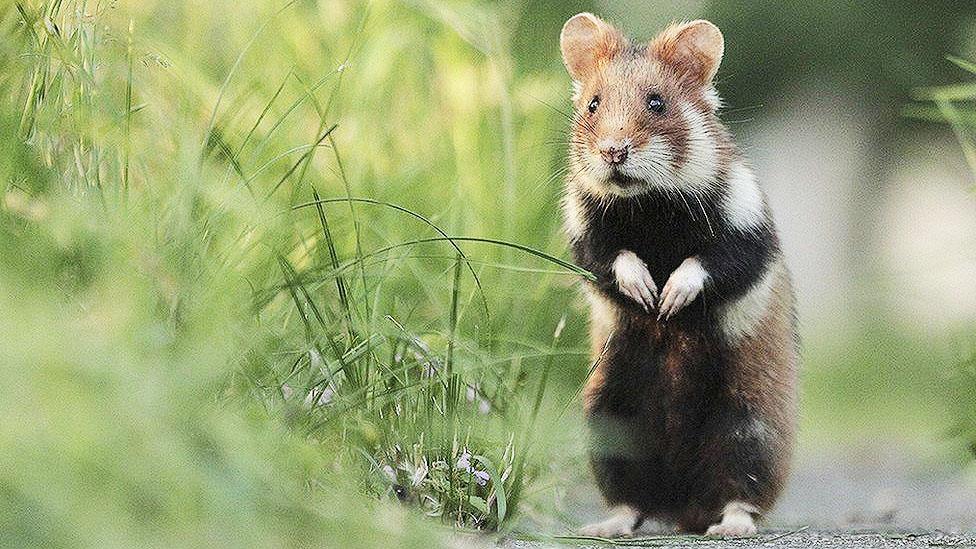European hamster added to 'critically endangered' list
- Published

You might want to hold Mr Snuffles extra tight tonight, because European hamsters have been added to a list of critically endangered animals.
They are among the new additions, external to the International Union for Conservation of Nature's (IUCN) "red list".
European hamsters are a much larger relative of Syrian or dwarf hamsters that are kept widely as pets.
Human influence on the hamsters' habitats is being investigated as the cause of the species' decline.
IUCN says global warming, industrial development, light pollution and plantations may be possible causes.
European hamster numbers have dropped by up to 75% in numbers across the French region of Alsace, in Germany and across Eastern Europe because female hamsters now give birth to fewer babies than they once did.
The IUCN says that in the 20th Century, a female hamster would give birth to an average of 20 baby hamsters a year, but this has dropped to only five or six a year.
Experts believe if nothing is done, they will go extinct in the next 30 years.
Vienna's graveyard hamsters
You might remember the European hamster from their appearance in an episode of David Attenborough's Seven Worlds series in 2019.
In the series, the hamsters were seen living in graveyards in Vienna because development in the city had robbed them of the meadows they used to live in.
Allow YouTube content?
This article contains content provided by Google YouTube. We ask for your permission before anything is loaded, as they may be using cookies and other technologies. You may want to read Google’s cookie policy, external and privacy policy, external before accepting. To view this content choose ‘accept and continue’.
But it's not only European Hamsters that have been added to the Red List.
There are 33 species of lemur which have been named by IUCN as critically endangered, with 103 of 107 types of lemur threatened with extinction.
This is mainly due to deforestation, although some species are also threatened by hunting.

There are 107 species of lemur. 103 are threatened with extinction, 33 of them critically
The North Atlantic whale is said to be "one step from extinction", with fewer than 250 mature individuals believed to have been alive at the end of 2018.
Also on the list is the less appealing Ophiocordyceps sinensis - or caterpillar fungus, which grows in the heads of ghost moth larvae on the Tibetan Plateau.
It's not quite as cute as the European Hamster, but it's been used in Chinese medicine for more than 2,000 years to treat kidney and lung diseases.


Follow Newsbeat on Instagram, external, Facebook, external, Twitter, external and YouTube, external.
Listen to Newsbeat live at 12:45 and 17:45 weekdays - or listen back here
- Published27 October 2019

- Published28 December 2019

- Published21 March 2018
